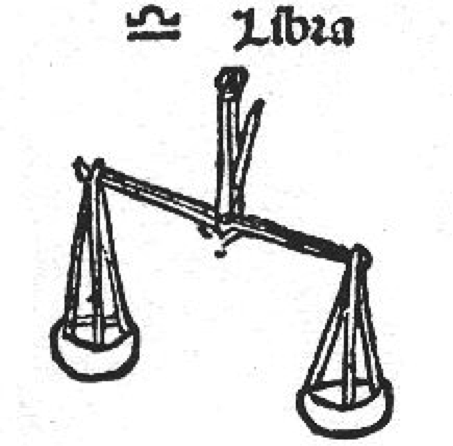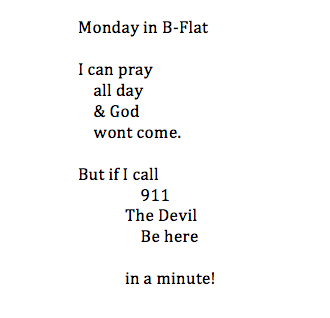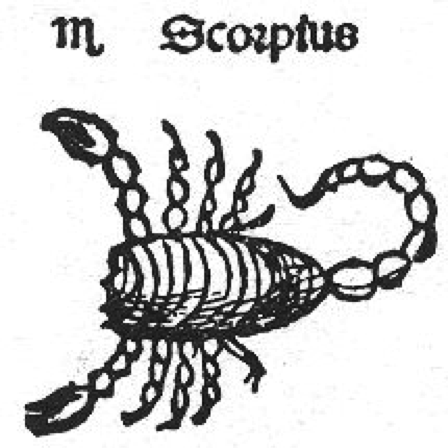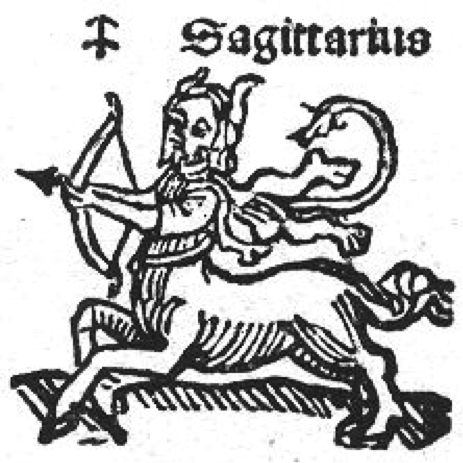Stars, Poetry—Part III: Libra, Scorpio, and Sagittarius
BY Hoa Nguyen

This is my third meditation on a personal wheel of poetic influence, grouped by modalities. (See here for my first one; here is my second).
What Are the Modalities of the Zodiac? A Review below:
Cardinal signs initiate action. The Sun’s entry into these signs coincides with the equinoxes and solstices. Cardinal signs are direct, assertive, forceful, and enterprising.
Fixed signs stabilize and secure the energy begun by the Cardinal signs. Fixed signs represent determination, power, striving after set goals, pride, and reliability.
Mutable signs adapt and disperse the element. Mutable signs are suggestible, resourceful, flexible, drawn to variety, and move with change.

Libra
Cardinal Air
Ruled by Venus
24 September – 23 October
Tarot: Justice
Libras are known for their love of beauty and their need for balance, justice, and fairness.
I always think of Libras as “kissed by Venus.” Poet Robert Kelly was born at the start of Libra (September 24) so it’s no wonder he invokes Aphrodite when he writes:
That light suffusing mist is thee, pardner,
hot-hipped and sore all about
from Aphrodite's lucidest negotiations.
All flesh wants you because your mind.
Libra, like all air signs is about the mind, the mental faculties, strategies, decisions, and language. Libras make good lawyers; they are the conscience of the zodiac. Like the Justice card in tarot, their motto is “I weigh.”
Amiri Baraka was born right in the middle of Libra (October 7). This placement confers a kind of seeking and finding of principles to live by and treasure. It also lends a particularly Libran trait of seriousness balanced with humor, as witnessed in this Baraka poem:

I think of Philip Whalen (October 20) as having that Libran language mind. Of his poems, he once wrote “This poetry is a picture or graph of a mind moving, which is a world body being here and now which is history . . . and you.” He takes influence from two very different poets, but in equal measure: Gertrude Stein (who he read when he was in the Army at the end of WWII) and William Carlos Williams (who was a visiting poet when he was at Reed College). Drawing from both, this could be seen as an act of balancing and weighing.
Last August in preparation for my writing workshop featuring the collected works of Philip Whalen, I dreamt that a young Phil Whalen and I were doing research in an archive—then we retired to his kitchen. His stovetop was rustic with whimsical attachments that he could use to pour water into pans; he was making us bacon. And he told me that he was willing to pour someone a glass of juice but that they would have to come and get it from him. He said it was most important.
That seemed like a beautiful metaphor for Whalen and his poems and the (somewhat passive) generosity and fairness of Libras—Whalen has some juice; he’s already poured it; we just need to come and get it from him.

Scorpio
Fixed Water
Ruled by Pluto
October 24 – November 22
Tarot: Death
“I am certain of nothing but the holiness of the heart's affections and the truth of the imagination.” —Scorpio John Keats (October 31)
I live with the poet Dale Smith; he happens to be a Scorpio (November 3). Whenever we talk stars and poetry, we marvel at the significant number of influential Scorpio writers that belong in his clan. These include Keats, Ezra Pound (October 30), Ted Berrigan (November 15), Joanne Kyger (November 19), Alice Notley (November 8), James Schuyler (November 9), and Lucia Berlin (November 12—who died on her birthday with a book in her hand).
Scorpios are known for their ability to shed skins and rebirth. They are often described as intense. They feel deeply and they are as focused and stubborn as any fixed sign.
It’s difficult to choose a single Scorpio as there are so many writers here I love. Ted Berrigan is on my mind as I’m teaching a writing workshop over the summer of 2014 where we read and write through his Sonnets.
In The Sonnets I see a Scorpionic construction of self, one that can be read as deeply interior as well as inhabiting spaces and times outside of the poet and his time. Informed by love and art, Berrigan takes up Keat’s certainty in “the holiness of the heart's affections and the truth of the imagination,” even as he pokes fun at Keats in the Sonnets with his mischievous lines that end Sonnet XXI:
I thought about all those radio waves
Keats was a baiter of bears
Who died of lust (You lie! You lie!)
And the wind goes there
We see this reference to “wind” as a returning theme (the first sonnet ends “Wind giving presence to fragments.”). It recalls breath, the life force; it is the “spir” or spirit and stands inside of inspiration: to breathe in. The state of amusement (“turning your muses on” as Berrigan has said) has a place in the act of creation. The Sonnets construct a life through art and by the virtue that we love, but like Keat’s negative capability, Ted Berrigan’s self or I “is a correspondent.” The poems are like those of all of the Scorpio clan: “feminine, marvelous, and tough.”

Sagittarius
Mutable Fire
Ruled by Jupiter
November 23 – December 21
Tarot: Temperance
Mutable comes from Latin, mutabilis: change, the breakdown before the breakthrough. Sagittarians are half in the human world, half another, and embody innovative synthesis. Some poets under this sign include Helen Adam (December 2), Emily Dickinson (December 10), and Kenneth Patchen (December 13).
It’s only fitting that I started writing this entry while riding public transit; Sagittarians have a love for movement and travel. I often say that Sagittarians have a “wandering foot.” Adam began in Scotland and ended up in San Francisco; Patchen started in Ohio, lived in New York City, and finally also moved to San Francisco. But the poet that I’m going to focus on is Dickinson, a poet who traveled not in body so much as in letters and poems.
Emily Dickinson was a prolific letter writer. A thousand survive; it is believed that these are only about one-tenth of the letters Dickinson actually wrote. In the second of the so-called “Master Letters,” she wrote:
I wish I were great, like Mr. Michael Angelo, and I could pain for you. You ask what my flowers said—then they were disobedient—I gave them messages. They said what the lips in the West, say, when the sun goes down, and so says the Dawn.
I’m drawn to unusual use of the word pain in the phrase “I could pain for you” and the ruffled syntax of “You ask what my flowers said—then they were disobedient—I gave them messages.” It’s almost as if her em dashes are centaur arrows, moving, moving, moving the sense forward, the breakdown before the breakthrough.
When I read her very mutable-sign line “I dwell in Possibility,” I think of the Temperance card and it’s relationship to Sagittarius. This tarot card signifies meaningful connections and the themes of harmony, adaptation, and “rhythmic patterning.” Like her poems, it embodies movement and blending. If you look at the poem that opens “Split the lark—and you’ll find the music.” you can find her sifting through language this way, at the level of the letter. Notice here how the letter L drifts through the language of the poem:
split, lark, you’ll, bulb, silver, rolled, scantily, dealt, lutes, old, loose, flood, shall, scarlet
I think of this when Dickinson writes, “Pulling syllable from sound.”
Parts I, II, III, and IV can be found here.
Poet Hoa Nguyen was born in the Mekong Delta region of Vietnam and raised in the Washington, D.C., area...
Read Full Biography

